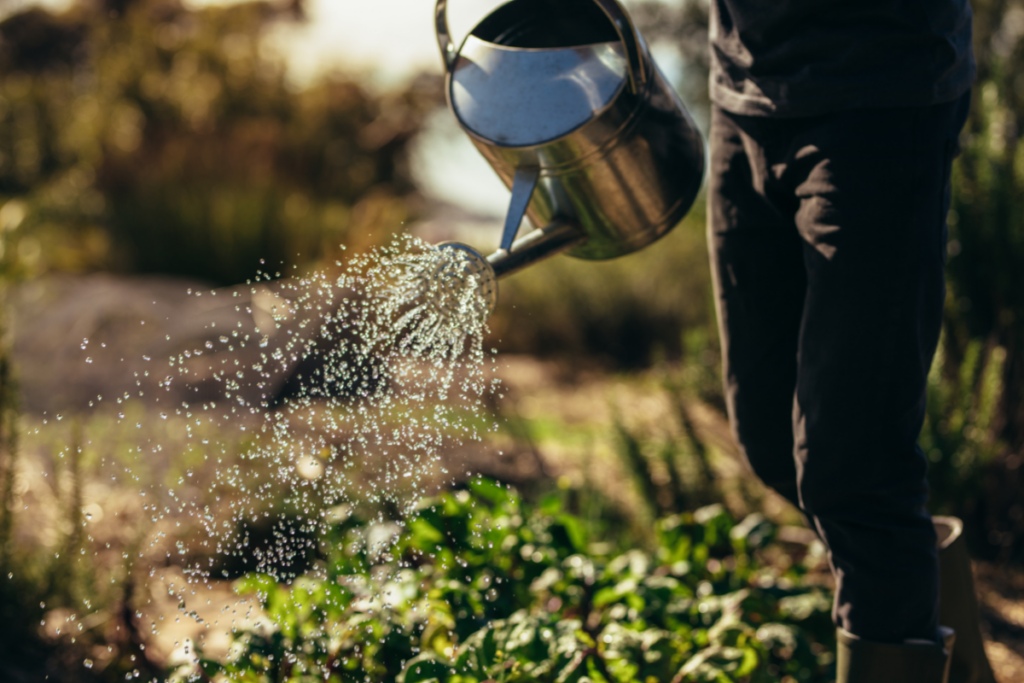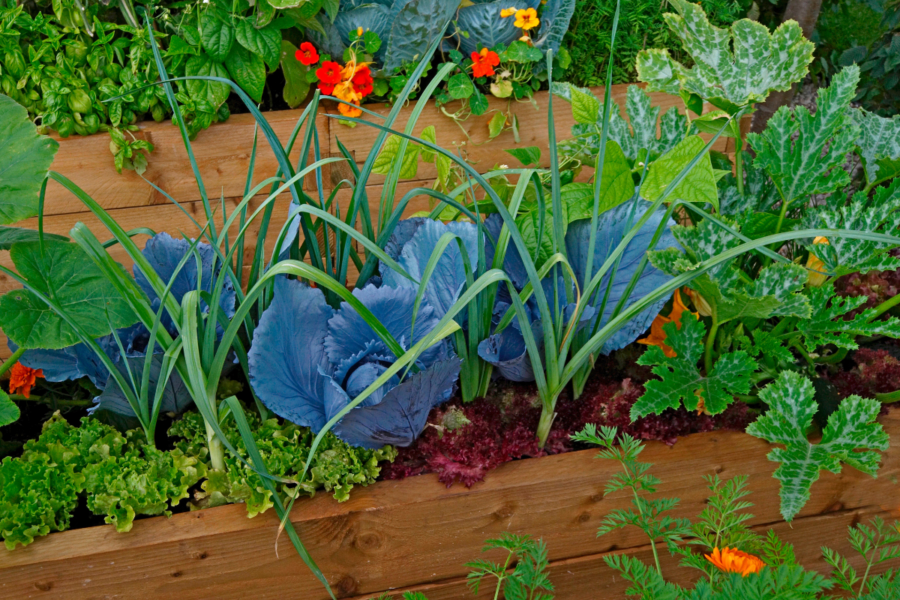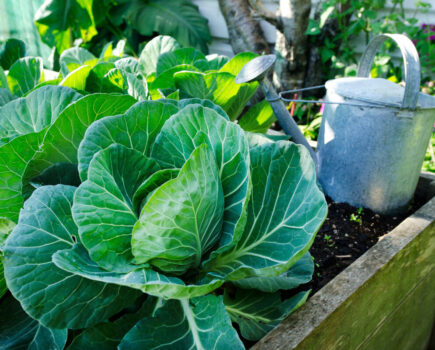Getting moisture right to the roots is crucial
During the long summer days (we hope are still on the way) our plants are working hard and need loads of water – on average those in the ground need about 2-3 cm (1in) of rain a week. Of course there are wet years and dry years, but even in wet years there can be longish dry periods so it’s better to water too soon for it never to be needed than to let swelling crops suffer, but how do you know?
A simple rain gauge is a tin can (or similar straight-sided open-topped container) stood in the open. Although some water may evaporate, this will still indicate if there’s been any significant rain, or just drizzle. Better, having several such gauges will give an average and then you can be sure to water soon enough.
Generally it’s also far better to water plant roots rather than spraying all over them, and for most of our garden a good soaking once or twice a week is of greater value than a wee daily ‘splash’. For really thirsty crops such as pumpkins, squashes, courgettes/zucchini, runner beans and tomatoes, give each a ‘funnel’ using an upside down bottomless plastic bottle. Such a funnel sunk in just enough to stand upright beside each plant means you can deliver a lot of water speedily, and without wasting most of it wetting the soil/compost surface all round to rapidly evaporate away.

Water containers well
Most succulent crunchy salads, Pak choi, Florence fennel, leeks, celery & celeriac really want conditions that are almost boggy, so another way of watering heavily is via a shallow trench running between plants.
Much more crucially, than plants in the ground, container-grown crops will need more attention. Even when it’s been raining, that’s no guarantee their thirst will have been quenched as often sprawling foliage (awkwardly wider than their pots), can mean rain drops run off and away, leaving plant roots suitably parched.
Ideally, every plant in a container needs inspecting and watering morning and evening to ensure their compost does not dry out. Drying out not only causes the plants to suffer but it gets so hard to rewet. If/when you do have to deal with dried out compost, use mildly warm liquid refreshment or water from below so roots can slowly access.
Don’t let roots rot
Saucers under pots help with watering but it’s risky to stand plants in them permanently as roots quickly rot if waterlogged for any length of time. However, the risk is that without the saucer the water runs straight through and away and does not have time to soak up. Yet hidden here is a larger problem – that there’s a dried out core in the compost that never ever gets re-wetted.
The best solution is watering by plunging the pots or containers up to their brims in a washing up bowl or similar of warm water for 20-30 minutes then letting them drain thoroughly. It makes sense to do this every so often as a precaution, and don’t forget your house-plants.
Find more tips, advice and articles like this at the Amateur Gardening website. Subscribe to Amateur Gardening magazine now





